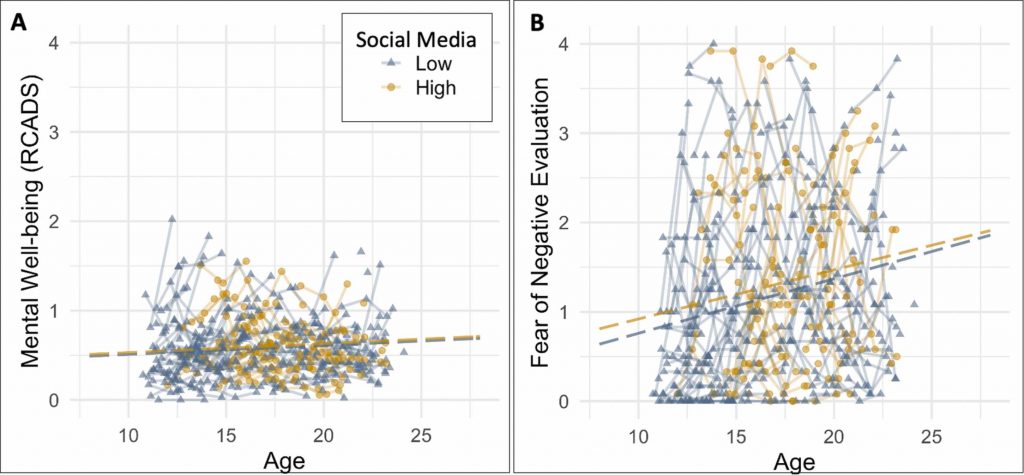Longitudinal associations between social media use, mental well-being and structural brain development across adolescence
Description
Longitudinal associations between social media use, mental well-being and structural brain development across adolescence
Youth of today grow up in a digital social world but the effects on well-being and brain development remain debated. This study tracked longitudinal associations between structural brain development, social media use and mental well-being. The study demonstrated two pathways of heterogeneity in brain development. First, adolescents who used social media more than their peers showed higher baseline cortical thickness in lateral prefrontal cortex (PFC) and medial PFC; and stronger decreases in the lateral PFC and temporal parietal junction. In contrast, adolescents with lower mental well-being showed lower baseline levels of surface area in the medial PFC and posterior superior temporal sulcus relative to their peers. These findings demonstrate that although social media use and mental well-being were both associated with differential trajectories of brain development, the associations we report are distinct. These results show a nuanced perspective on the presumed relations between social media use and well-being and provide a starting point to further examine neural mechanisms that could explain which adolescents thrive by social media and which might be harmed.


